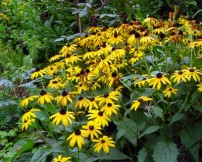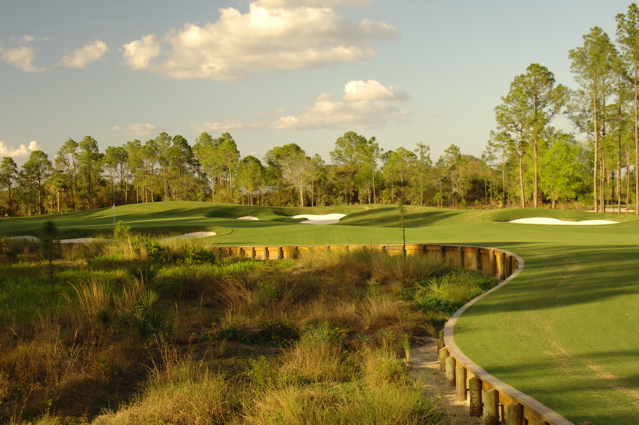Geoponics Blog
Golf Course Superintendent, Chris Hughes of Silver Certified Audubon Signature Course The Old Corkscrew Golf Club discusses some of the benefits he has found with the Geoponics products.
Products Discussed: Penterra (Penterra.net), Humawet (Humawet.com), HydraHawk (HydraHawk.com), Carbotein (Carbotein.com), Grizzly Foliar Nutrients (GrizzlyFoliars.com)
What are some of the challenges that you face on your course as it relates to moisture management?
Well, being an Audubon Signature Course really helps you tune into a lot things. You have to put a lot of thought into what you are putting out, where it is going and how that is going to effect the environment. It has a lot to do with planning. I mean, you just don’t go out and sling fertilizer wall to wall. We have our spray zones that we stick to. Even on our greens we have Audubon boxes that are collection and filtration devices to minimizes the runoff into water and groundwater. We focus a lot on the utilization of water. For our specific situation, our course has a lot of undulations which can be a challenge in itself for managing water. You have low areas, high areas, wet areas and dry areas which demand a lot of man hours and hand watering if you do not stay on top of it. To off set that, we use wetting agent and surfactants. Here we are using Penterra, Humawet and HydraHawk.
Wow that sounds like a lot to manage! You had mentioned Penterra, Humawet and HydraHawk. Has the use of these products helped you address some of these challenges and how do you use them?
Oh yes, they have helped a great deal! For example, Humawet and Carbotein I mix together and use on the mounds. Mainly on the greens. But if I have issues in the fairways and roughs, I will use it there as well. As we all know, a USGA certified greens consisist mostly of sand, some organic but not so much. So I use these products to help keep moisture levels where they need to be and supplement plant nutrients with Carbotein. We use the Penterra mainly on the fairways or on the greens if we have areas that tend to remain wet. Penterra does a good job of keeping the water moving. HydraHawk we use to as a maintenance product in all areas, sometimes with foliars and sometimes alone. Just depends on what is going on with the golf course at any particular time.
 Golfers come to play Old Corkscrew to test their skills to the limit, based on that knowledge, you like to keep your greens’ rolling speed lean and mean. You have been using the MEGAMAX, TERRAIN and KODIAK from the Grizzly Foliar line. How have these helped you give your customers a putting surface that is true to their liking?
Golfers come to play Old Corkscrew to test their skills to the limit, based on that knowledge, you like to keep your greens’ rolling speed lean and mean. You have been using the MEGAMAX, TERRAIN and KODIAK from the Grizzly Foliar line. How have these helped you give your customers a putting surface that is true to their liking?
Well, it is a challenging golf course and very enjoyable all the way around. All the native plants and nature here….it is just beautiful to be out here. It is a real experience for anyone! As far as the Grizzly products, when I first started in the business it seemed to be mostly granular based products. Over the years and through researching different companies and pricing, foliar feeding seemed to be a good way to maintain the grass. Made good sense…Also, more recently, the strain that everyone has been feeling due to the economy, I would have to say that money was also a factor as well. Looking at everything, MEGAMAX and TERRAIN fit my budget and they gave me what I was looking for. That being said, I was never looking for a flush of growth either just good uniform color and health. As far as the green speeds, I definitely like to keep them lean and mean. With the use of these products I have not found myself lacking according to tissue analysis and soil samples. MEGAMAX does have a small amount of Nitrogen and quite a bit of minors and secondaries and will give you the color if you need it. Same with the Terrain except it carries a little more Nitrogen. If I need a little more Potassium I will use the KODIAK. I more or less flip flop them based on my needs to maintain color and turf health and they have done a good job at that. It is like, well, going back to using Carbotein on my mounds or weaker areas, there is not a set time or anything, as I walk my greens and watch them, I give them what they are asking for.
Sounds like you are a man who knows exactly what he is looking for. Based on the reputation, tournaments and awards Old Corkscrew has earned, you are doing a wonderful job of it. Our congratulations to you and the golf club!
I guess driving the course every day over the years you just know where your problem areas are and you try to address them accordingly and the Geoponics products have done a good job to help reduce the time needed to achieve what our customers are looking for at a price we can afford.

 With August heat bearing down on us, one wonders what we would do without air conditioning. Gardening in the heat surely takes its toll on the human torso. If we couldn’t sweat (excuse me, perspire) to cool down, we wouldn’t last very long outdoors this time of year.Plants have a way of cooling themselves as well. They don’t perspire, they transpire. The evaporation of water from their leaves serves as natures “air conditioning” and usually keeps plants from overheating. Plants are truly amazing since this transpiration process also allows green plants to obtain atmospheric CO2 from which plant food is made for growth, flowering, etc.
With August heat bearing down on us, one wonders what we would do without air conditioning. Gardening in the heat surely takes its toll on the human torso. If we couldn’t sweat (excuse me, perspire) to cool down, we wouldn’t last very long outdoors this time of year.Plants have a way of cooling themselves as well. They don’t perspire, they transpire. The evaporation of water from their leaves serves as natures “air conditioning” and usually keeps plants from overheating. Plants are truly amazing since this transpiration process also allows green plants to obtain atmospheric CO2 from which plant food is made for growth, flowering, etc.
This past week I was reminded that not everyone prizes AC like I do. As part of the annual Master Gardener conference we visited the home and garden of Eudora Welty, Mississippi’s great writer of short stories. Miss Welty lived most of her life in Jackson, Mississippi across the street from Belhaven College.
During the tour, one of Eudora’s nieces explained how Miss Welty loved the outdoors and that her home wasn’t air conditioned, by her choice. She would type away in her upstairs bedroom, windows open, apparently unhindered by sweltering Mississippi summers. She loved the sights and sounds of her garden. Our group of gardeners, well acquainted with our tropical climate, sighed in near disbelief.
I know there are hotter places to live, but it’s still amazing to hear of someone like Miss Welty foregoing such modern conveniences. Her stamina must have been remarkable. It’s also equally amazing to observe the many annuals, perennials and flowering shrubs that flourish in the pressure cooker of a Mississippi summer. We can grow an incredible number of plants that make us look like champion gardeners without a lot of extra effort.
This summer, I’ve been especially impressed by flowerbeds that looked really good in places where they weren’t getting much attention. Some outstanding performers include some old time favorites like Periwinkle, Zinnias, Marigolds, Daylily, Lantana, Salvia and Cosmos. Other super plants included the marvelous Angelonias, Cuphea (Firecracker), ginger, Melampodium, Black-eyed Susans, Pentas and new plants like Amazon Dianthus.
These are just some of the flowering annuals and perennials that have made my list. We could make an equally long list of colorful foliage plants for sunny sights like Sweet potato vine, multicolored Coleus and sturdy strap-leaved Caladium. Flowering trees and shrubs that made my hot list include crape myrtle, Vitex, Althaea and butterfly bush.
In her book, Losing Battles (1970) Miss Welty mentions a garden where “from the waterless earth some flowers bloomed in despite of it.” She wrote of Althaea, Cannas, Celosia, Lemon Lily (Daylily), Monbretia, Morning-glories, Salvia and Verbena as if she too was surprised to see such colorful display in quite harsh conditions. Have you made your list? Happy gardening.
Kerry Johnson PhD
Extension Horticulturalist
Retired
Credit MS Gardens Newsletter Archives
The Story of Cap & Trade is a fast-paced, fact-filled look at the leading climate solution being discussed at Copenhagen and on Capitol Hill. Host Annie Leonard introduces the energy traders and Wall Street financiers at the heart of this scheme and reveals the “devils in the details” in current cap and trade proposals: free permits to big polluters, fake offsets and distraction from what’s really required to tackle the climate crisis. If you’ve heard about Cap & Trade, but aren’t sure how it works (or who benefits), this is the film is for you.

